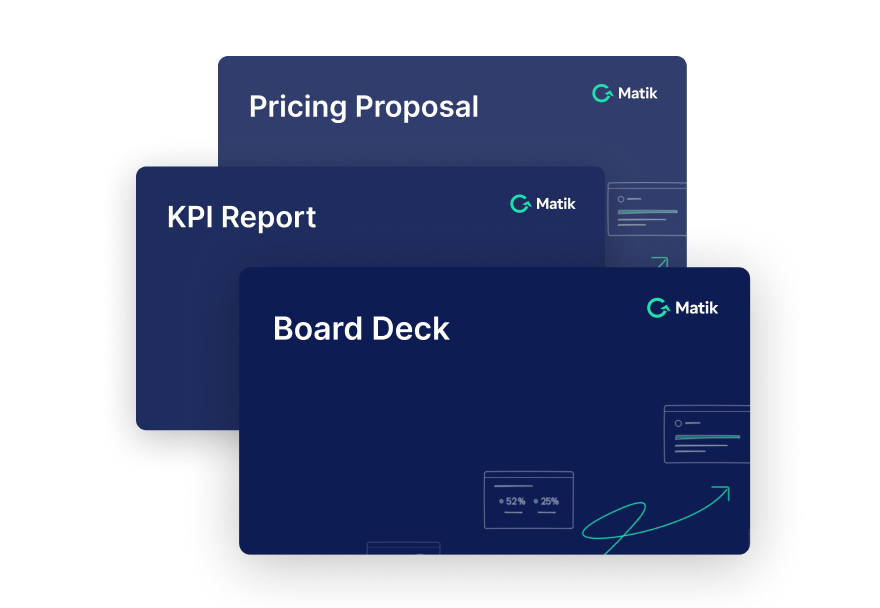Join Our Newsletter
As a data engineer or data analyst, you face numerous challenges, from tight deadlines to complex data sets and demanding stakeholders. You’re stretched thin. And while you get tons of fulfillment from building custom dashboards and reports in Tableau, Looker, or other BI tools, it’s frustrating to spend so much time creating these custom dashboards only to have someone come to you and ask for something new week after week.
As someone who has worked closely with data teams for some time, I know the realities of having to meet high expectations from numerous stakeholders scattered across different departments. It’s stressful and very difficult to prioritize which requests are actually “P0.”
Trust me, I get it. At a former company, I lived smack dab in between customer-facing teams and our analysts. Data requests from customer success, sales, and support would flood through our ticketing system constantly. And as a “representative” of our sellers and customer success managers, I felt obliged to create a sense of urgency around any request that was directly tied to revenue. Because what’s more important than customer retention, right?
The problem(s)
Well, if you’re a data analyst or data engineer, you know that handling requests like these is merely a sliver of what you do. You’re busy — you help with all financial modeling for your C-Suite. You provide product reliability monitoring to ensure that your platform isn’t experiencing outages. You support HR with reporting on compensation and benefits to ensure they don’t miss payroll, commission, and bonuses. All of these items (among plenty of others not listed) are extremely important.
But, the CSMs you work with are laser-focused on their customers, and it’s sometimes hard for them to see the forest from the trees. And, while requests from CSMs are important to your data team, they simply are not weighted as highly as some of the other items that your data team is focused on (especially when numerous dashboards, time, and other resources have already been allocated to that department).
I’ve seen this play out many times throughout my career, and it’s always obvious that data requests from sellers, CSMs, and support will never subside (even when your data team has already provided them with tons of reporting.) And the longer it takes for your data team to get essential information in the hands of front-line sellers, the longer it takes them to put together critical assets like health checks and QBRs. This presents challenges for CSMs who need to share reporting & insights with customers on a quarterly (and sometimes monthly) basis.
Still strapped for time and bandwidth, your data team may be continuing to create dashboard, after dashboard, after dashboard, even though the visualizations never seem to hit the mark. This process is the definition of insanity: Your team is constantly creating new dashboards and visualizations, expecting a different result.
For example, at a previous company, in an attempt to safeguard data analysts’ time while also giving the CSMs and sellers the information they needed, our analysts decided to democratize access to our BI tool. We gave some of our CSMs and sellers the appropriate permissions to create their own visualizations. And just as the prophecy foretold, our sellers and CSMs lacked the time and technical chops to build their own dashboards. Those that did build their own created mass confusion for their colleagues by creating more dashboards than were necessary.
Suddenly, we had a new problem on our hands: “dashboard fatigue.” Sellers and CSMs no longer knew which visualizations were the right ones to use or to show customers.
As I’ve witnessed and experienced, these problems make things even more complicated. Analysts are still drowning in tickets that are coming in from sales, customer success, and support, while sellers and CSMs are still left without the answers they need. CSMs are sharing inconsistent slide decks with customers, the whole team is on different pages, and data teams are left to clean up the mess.
Ultimately, these complications can lead to a disjointed go-to-market motion and can impact your company’s ability to deliver a world-class customer experience. And now, you’re probably wondering: How can we fix problems like this without creating a whole new set of problems?
The solution
Since I’ve joined Matik, it’s become evident to me that the scenarios I explained above are not unique. Rather, these are common problems that organizations face all the time. The challenge that I see when speaking to data teams, however, is that they are still stuck in “dashboard land.”
So how do you fix it? Meet Matik — a tool that streamlines the process of generating presentations by pulling data directly from your connected data warehouses, BI tools, and CRMs into PowerPoint or Google Slides… and even email.
With Matik, you can empower your salespeople and customer success professionals to create their own presentations that are standardized, consistent, and accurate without them needing to know how to use any BI tool or come to you for any help (read that last part again).
Similar to some of the skepticism I heard from my data colleagues while evaluating Matik as a buyer (yes, I’m a former customer), I’ve seen data teams struggle to understand how populating visualizations and data in a “pretty slide deck” is any different than taking screenshots of the same visualizations from the BI tool they’ve already invested in.
That's why when your data team first hears about Matik and how it “auto-magically” generates presentations with data from your connected sources, you may feel skeptical and maybe even a little offended. After all, it seems like just another technology that you’ll be responsible for managing, and you’re already running out of steam.
But, before you write off Matik as just another presentation tool that you don't have time for, consider the benefits that it can bring to your team.
Enable your sellers and CSMs to self-serve
One of the best things about Matik is that it enables sales and customer success teams to build their own dynamic content without needing to know SQL or any other query language if they’re connecting to a BI tool, CRM, or spreadsheet. This means data engineers and analysts are free from having to build custom insights for sellers and CSMs when their customers make one-off requests. Your data team can focus on higher-level tasks while still providing your colleagues with the data they need to go to market.
And if you decide to use a data warehouse or SQL server, then you only have to write one SQL query for each insight, and Matik will automatically put the name and relevant filters your sellers and CSMs need in the WHERE clause of your SQL query. This means you can spend less time writing and rewriting SQL queries for every ad-hoc request per customer, and more time doing what you were actually hired to do.
The best part? Any piece of dynamic content that you create can be applied to any new slide deck that is created. That means, the bigger your library gets, the less your sales and customer success teams need your support.
Prioritize security
Another great part of Matik is that it's built with security in mind and maintains a phenomenal security posture. Matik is SOC II Type 2 compliant and has passed nearly every vendor risk assessment form provided.
Oh! I almost forgot: Matik also never ingests, stores, or writes data back into any connected data sources so you can rest easy knowing that the hard work you’re doing in Redshift, Snowflake, and any other data warehouse won’t be disrupted.
______
To wrap up, as someone who has seen Matik in action (first as a Matik customer and now as a Matik team member), Matik is a powerful tool that can help data teams streamline workflows and enable sellers to go-to-market more efficiently than any dashboard could ever do. So, data analysts: The next time a salesperson or customer success professional comes to you with a request for a customized presentation, point them in the direction of Matik.
See Matik in Action—Request a Demo















